In this Good Practice Note, Archana Sharma shares her experience with promoting ecotourism among the Pardhi community in Madhya Pradesh, building on their traditional skills, culture and values. It also demonstrates that small forest patches can be conserved by being used for ecotourism.
CONTEXT
Pardhis are a community of traditional hunters, who live a nomadic life, and hunt predominantly for meat. They also help farmers against crop raid by wild herbivores, cull man-eaters on behalf of communities and governments, and in the past helped royalty on hunting expeditions. They had an important role in ensuring food security when agriculture was deficit. One of the most socially excluded communities, the Pardhis were listed among the ‘criminal’ tribes in 1871 by the British and were denotified[1] only in 1952. But the nationalization of wild fauna by the Indian Government in 1972, made illegal the craft, culture and lifestyle of the Pardhis. No specific efforts for rehabilitation of the Pardhis were made by the Government of India post nationalization in 1972 (Box 1). As no rehabilitation efforts were made, the Pardhis continue to ply their traditional occupations.
| Box 1: Nationalisation of Wild Fauna: Implications for Hunting Communities, such as Pardhis With rapid decline of game populations, the Indian Government nationalized wild fauna in 1972. The Wildlife Protection Act 1972 is an Act of the Parliament of India enacted for protection of plants and animal species. Among other reforms, the Act established schedules of protected animals. Except for a few exceptions, hunting of these species was largely outlawed. Several reasons can be attributed to depletion of game, but, habitat loss, in which the hunting communities had a negligible role to play, was the primary reason. The ban on all kinds of hunting, trapping or snaring of wild fauna, made illegal the craft, culture and lifestyle of the Pardhis. No specific efforts for rehabilitation of the Pardhis were made by the Government post nationalization in 1972. After nationalization it was expected that the Pardhis would shift to other livelihoods. But a poor level of education and immense prejudice because of a historical criminal tag and nomadic lifestyles has kept the community out of other livelihoods. While on the one hand, their traditional livelihood was deemed unlawful by the passing of wildlife conservation acts and laws, no specific efforts were made by the government to shift them to alternate livelihoods. The ‘Eco-development’ scheme launched in 1991-92 to reduce biotic pressure on protected areas by supporting livelihoods of villagers living in and around protected areas failed to accommodate such nomadic communities (MOEF 2002). Even the Wildlife Conservation Strategy-2002 adopted by the Indian Board for Wildlife, and the National Wildlife Action Plan 2002-2016 do not recognize the special needs of these nomadic groups (MOEF 2002). In the last two decades ecotourism began to be advocated as green and good for the environment and forests. But most destinations are elite spaces with little connection or benefit for local people. |
The Pardhis in Madhya Pradesh have not been able to benefit from Government’s affirmative action because the majority of them are not listed under Scheduled Castes, Scheduled Tribes or OBC lists. Public welfare measures pay scant attention to the Pardhis. Over seven decades of independence officially designated groups of people, recognized in the Constitution, as facing positive discrimination have come to become the yardstick for people in need of developmental support. The Pardhis in the project district are neither Scheduled Castes, nor Scheduled Tribes nor Other Backward Classes. Madhya Pradesh had a Denotified and Nomadic Tribes (DNT) Department, but it does not have any livelihood schemes. Most government support therefore is closed to them Box 2.
| Box 2: Natural Private Forests of Madhya Pradesh: A Liability for Owners Almost all the natural forests of Madhya Pradesh are owned by the state – as Wildlife Protected Areas, Reserved Forests, Protected Forests or Common Lands with the Revenue Department. But a few small pieces of land with standing forests are also owned by private people. These are not new era elite private owners whose forests support nature or are spaces for escape, but a small refuge for birds, bees and butterflies. Private forests in Madhya Pradesh are owned by farmers and have a standing crop from at least the last 50-100 years. In Southern Madhya Pradesh most of the private forest owners are tribal farmers. With a few exceptions, these private natural forests are a liability to the owners. The plots are usually big and require constant monitoring. They are difficult to protect and are usually the only thickly forested area in the vicinity. Cattle graze the lands, and local villagers collect firewood and food. For these owners, ecosystem benefits such as carbon storage, nutrient cycling, water and air purification, and maintenance of wildlife habitat are not motivations as they have pressing economic needs that their current agricultural lands do not meet. Harvesting timber is not remunerative because of the unsupportive law and policy framework. The fees and transaction costs of timber harvesting make it financially unviable. The viable alternate use, i.e., conversion of their forests to agricultural land has to be stealthily done over the years by small scale illegal felling. |
In the 1970s stray efforts were made to give them a settled life through grants of agricultural land. But it had limited impact. Most often, the Pardhis never got possession of the land, or the quality of land was very poor. Most Pardhis today aspire to a life out of trapping and foraging, if sufficient alternative livelihood opportunities are made available to them. They aspire for dignified lawful livelihoods but are unable to shift to such occupations. To add to the problem, the boom in international trade in wildlife products has propelled some members of the community into large smuggling rackets. The unique skills of the Pardhis have enormous demand from connoisseurs of wild meat, wildlife smugglers, and traditional healers.
A small group of Pardhi families collectively own one such forest plot in a village in Obedullganj block of Raisen district of Madhya Pradesh. An ecotourism project ‘Oosera’ (see Box 3) was initiated in 2019 on this plot of land with support from Aranya, an NGO based in Bhopal. The project has been supported by National Bank for Agriculture and Rural Development – NABARD (India’s apex regulatory body for overall regulation and licensing of regional rural banks and apex cooperative banks) and Inspire Network for Environment (a national NGO working in the area of environment).
The project had the following objectives:
- Help Pardhi community secure a safer and dignified future for themselves and their children through lawful and sustainable livelihoods;
- Help the community showcase their culture, tradition and skills to create more awareness about themselves in mainstream society;
- Create alternate livelihood options for a population associated directly with the project as well as for those who are living in surrounding villages in terms of availability of market and visibility;
- Conserve a seriously threatened piece of private natural forest.
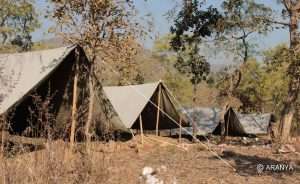 The Madwada Dera at Oosera
The Madwada Dera at Oosera
| Box 3: Oosera Oosera is an ecotourism destination in Madhya Pradesh’s Raisen district. It is an approximately 50-acre piece of forest in Nasipur and Bhootpalasi villages close to, but not abutting, the Ratapani Wildlife Sanctuary. Aranya, a non-profit that engages with the Pardhi community has supported them in starting Oosera. This ecotourism facility showcases traditional tracking and hunting skills of the community and educates people on wildlife behaviour and the complexities of wildlife conservation. This educational component of wildlife-centered ecotourism is in contrast to the current system of showcasing wild animals in their natural surroundings. Oosera also provides visitors with a rare experience of a non-agrarian, non-pastoral culture. Oosera is less than a kilometer away from the Ratapani Wild Life Sanctuary in Obedullganj Forest Division. As of March 2013, in-principle approval by the National Tiger Conservation Authority has been granted for upgrading Ratapani Wild Life Sanctuary to the status of a tiger reserve. And it is a good game area en route to Panchmarhi and Madhai. Its close proximity to Bhopal makes it a promising attraction for tourists. The area also abounds in India’s best prehistoric sites. Oosera has three UNESCO World Heritage Sites close by, two within a 25 km radius and one about 75 kms away. |
GOOD PRACTICES
Building Trust with the Community
The most difficult part of the project was to sell the idea – both to the community and to a grant provider. The community is self-exclusionary. The stigma of anti-social heritage still continues to surround them. Like other Denotified (DNTs) they too are alien to the concept of social justice. Initial discussions met with a lot of suspicion. The community was not sure if it was a way to deprive them of their land. They were worried if guests would intrude on their privacy and if activities in the forest would lead to more harassment from forest and police personnel. The details of the location are given in Box 4.
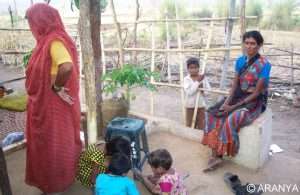 Silab bai and Girija – the early adopters who helped mobilize their community
Silab bai and Girija – the early adopters who helped mobilize their community
| Box 4: Land Ownership This forest area is surrounded by agricultural land on all four sides. The forest has two owners. Roughly half of it is owned by one tribal farmer from Bhootpalasi village. The other half is commonly owned by 14 Pardhi families : organized into the Bail Pardhi Krishi Samuhik Samiti Maryadit. It is a group patta awarded to a few families of the community. The land owned by the single farmer has crop with higher density whereas those owned by the Pardhi community is largely degraded. This is because of the differential social capital of the two owners, which impacts upkeep. |
Building on a Community’s Existing Strengths
Alternative approaches are vital to help the Pardhis with other livelihoods. The project looks at the problem as an opportunity. The Pardhis have, for centuries, accumulated vast knowledge of wildlife behaviour. They needed this knowledge to track animals, to design their traps, snares, and nets and to keep the animals alive till sale. With the exception of a few sub-tribes, Pardhis trap almost all animals alive. They know how to accurately calculate patterns and schedule of territory marking to lay traps, they know calls and camouflages to snare, and they know to befriend birds and animals to trap others. They know the speed, strength, stamina, flight span and seasonality of the behaviour of many species. The skills and tools that have evolved over hundreds of generations could be of immense use in wildlife research, education and tourism. The project decided to build their initiative around these skills by replicating a Pardhi’s Dera (a hunting camp) (Box 5).
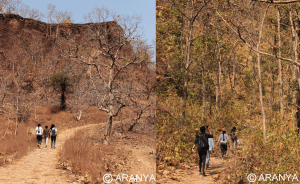 Treking -the most prefered activity at Oosera
Treking -the most prefered activity at Oosera
| Box 5: The Experience of Living in a Nomads’ Camp Oosera is the replication of a Pardhi Dera (hunting camp) inside a dry deciduous teak dominated patch of forest that the community has conserved. A set of 10 traditional Pardhi tents with capacity for 30 people has been put up on the private forest patch. It also has a small museum where some exhibits on Pardhi culture have been displayed. |
Income and Employment Generation
The part of the forest owned by the farmer from Bhootpalasi has been taken on lease creating some income for him, from an asset that was providing no returns. All the camp staff is from the Pardhi community. Young people who have good knowledge of wildlife, are articulate and willing, have organized themselves into a group and manage the tourism activities. Service providers, such as taxi people, milk suppliers, carpenters, electricians, etc., are all locals. Assets created are being transferred to the community though a society of the Pardhis. Much of the earnings from the operation belong to the group members but a part of the turnover or a share of profit will be used for village development work. Towards this objective, a tap water supply system for all families in the hamlet has been provided by Oosera. The community has full control over the funds.
Training to Pardhi Youth
Pardhi youth were trained in conducting forest walks with tourists, explaining various elements of nature, such as plants, animals, animal signs, birds, etc., during these walks, focusing on tracking animals on the basis of the signs encountered on the walks. The training involved basic communication skills, etiquette, hygiene, the use of binoculars and other basic equipment, apart from indicating the limits to which they can go in tracking animals.
Promoting Sustainable Practices
All construction activities used local material and were undertaken by the community. Not just Pardhis but other locals also participated. To promote sustainable practices, most of the articles used in the site are pre-used. The destination is totally powered by solar energy and the power generated is also shared with the community.
Attracting Visitors
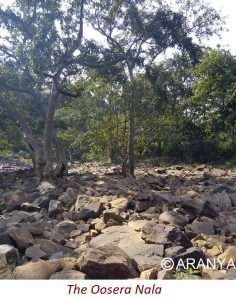 The Oosera team is preparing an inventory of all the resources that will be used for making the explorations more interesting and engaging. It is listing all the features of the forest, such as animal and plant species of interest, the soil, land and geographical features such as caves, dens, rocks, dead and fallen trees, snags, animal burrows, etc., as well as the signs, sounds and smells that the Pardhis use to locate and track animals. This will help expand the list of activities that go towards an exploration walk in the forest. Traditional arts and culture of the Pardhis are showcased to the guests through cultural shows, cuisine, orientation talks, etc. This includes the gatha singing traditions and other forms of folk art. The team is responsible for patrolling and protecting the forests. Eight youths earn a monthly wage. The project’s mission is presented in Box 6.
The Oosera team is preparing an inventory of all the resources that will be used for making the explorations more interesting and engaging. It is listing all the features of the forest, such as animal and plant species of interest, the soil, land and geographical features such as caves, dens, rocks, dead and fallen trees, snags, animal burrows, etc., as well as the signs, sounds and smells that the Pardhis use to locate and track animals. This will help expand the list of activities that go towards an exploration walk in the forest. Traditional arts and culture of the Pardhis are showcased to the guests through cultural shows, cuisine, orientation talks, etc. This includes the gatha singing traditions and other forms of folk art. The team is responsible for patrolling and protecting the forests. Eight youths earn a monthly wage. The project’s mission is presented in Box 6.
Business has been limited because of the two waves of COVID-19 pandemic in 2020 and 2021. Many bookings had to be cancelled. Despite that the period between September 2020 to March 2021 saw a number of groups visiting the destination. During these five months, about nine groups – totaling 60 persons – have visited the destination. The feedback has been encouraging and Oosera will be accepting bookings once the COVID situation clears up.
| Box 6: Mission of Oosera Ecotourism Project •Works towards increasing environmental awareness •Provides direct financial benefits for conservation •Provides financial benefits and empowerment for local people •Respects local culture •Conserves biological diversity and cultural diversity through ecosystem protection •Provides jobs to the ostracized Pardhi youth •Shares socio-economic benefits with the local communities •Has informed consent and participation of the locals in the management of ecotourism enterprises •Promotes Pardhi culture and helps society appreciate the rich knowledge and tradition of the Pardhis •Conserves local flora, and fauna |
Partnerships
The project budget as planned is much larger than what could be raised. But Aranya has decided to start the site with selected activities and expand over the years. NABARD was the main grant provider. With NABARD support, the entire crucial infrastructure for the Dera was developed. It included some basic landscaping, tented housing facilities, common facilities such as dining, pantry, etc. NABARD also funded some of the trainings for the community youth. The total support was around INR 23 lakhs.
Inspire Network for Environment, a national NGO working in the area of environment, supported generation of solar power for the destination. The power is also shared with the general community. Inspire Network raised funds for Oosera from the Global Green grants fund which was approximately INR 8 lakhs.
The project is now trying to raise funds under MGNREGA[1] for forest enhancement and water conservation, and with the Madhya Pradesh Tourism Development Board. Partnership is being explored with MP Tourism Development Board for skill upgradation of the team.
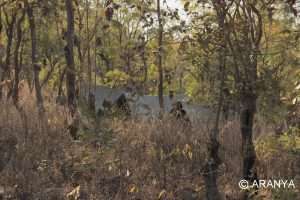 Dry Deciduous Teak Forestrs of Oosera
Dry Deciduous Teak Forestrs of Oosera
SUSTAINABILITY AND SCALING UP
Oosera was developed and is operated by the most marginalized of social groups and people with complex developmental issues. It is on a piece of land which is highly prone to encroachment attempts. Yet the project has shown positive potential due to its focus on conservation, community, and the interpretation approach adapted by the ecotourism project as illustrated in Figure 1. The model is fully scalable. It has also proven that communities can plan and manage a group enterprise, and has turned out to be a positive impetus for conservation.
 Figure 1: THE ECOTOURISM PROJECT TRIAD
Figure 1: THE ECOTOURISM PROJECT TRIAD
LESSONS LEARNED
The project presumes that the Pardhis will abandon hunting only if an alternative gives them better incomes and more respectability, through a vocation based on their traditional skills, culture and values. As tracking and capturing game is their traditional profession, a new vocation which uses these skills has a better chance of success than any other activity that requires the acquisition of new skills.
Leasing forest owned by the farmer from Bhootpalasi and employing local youth has resulted in creating a premium on conservation as against stealthy conversion of their forests into agricultural land. It demonstrates that small forest patches can be conserved by being used for ecotourism and they can contribute to conservation.
REFERENCES
MOEF (Ministry of Environment and Forests). 2002a. Project Tiger. <http://envfor.nic.in/pt/str2002.html> accessed on 31st July 2002.
MOEF. 2002b. National Wildlife Action Plan (2002–2016). New Delhi: Government of India.

Archana Sharma, Managing Trustee, Aranya, Bhopal (aranyaloknyas@gmail.com)



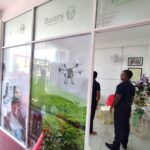




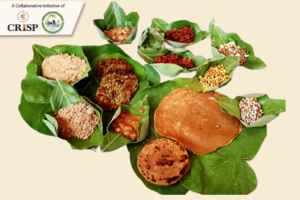
Great effort to rebuild hopes of alternative livelihoods around traditional strength of skills, traditions and culture. Very promising initiative worth scaling up and scaling out. Congratulations!
Nice read and interesting to know about such a group of people and their conservation practices. Interesting to see how they earned better income and livelihood.
I would like to take two lessons from this GPN
1. Looking for the solutions within the system is more important than considering changing the system/ introducing an external idea. By doing this even the adversities can be turned into opportunities. 2. There are a number of ways to ensure the conservation of natural resources apart from enacting laws, making regulations, or punishment. These include facilitating community engagement, providing incentives for using their skills in a desirable way, and building trust with them.
Such kind of approaches converging tourism promotion with the sustainable livelihood of the community members are also there in other parts of India, though in a different context (Mawlynnong, Meghalaya, the cleanest village in India).